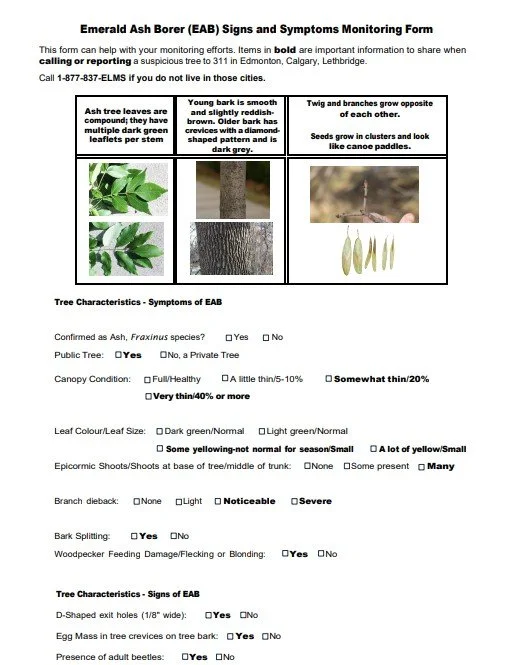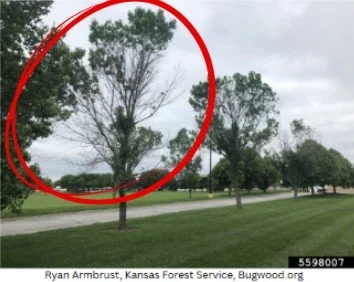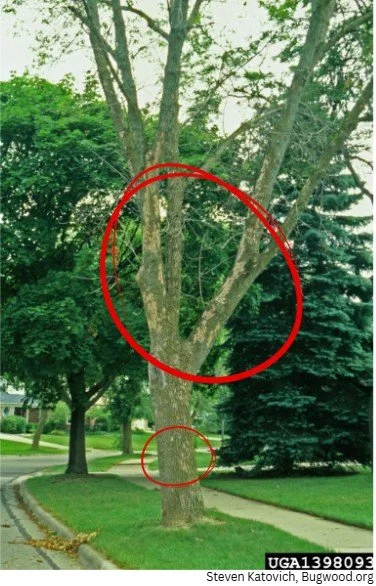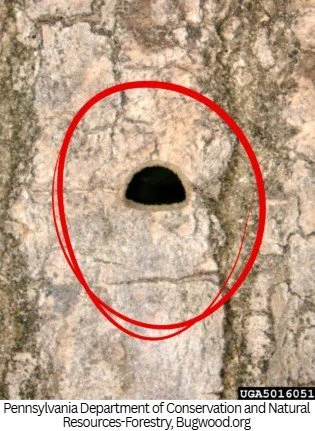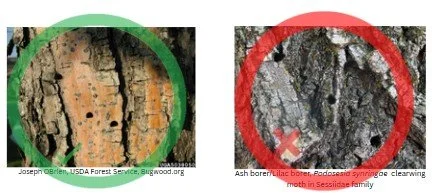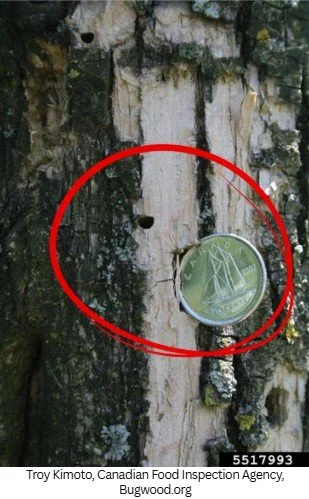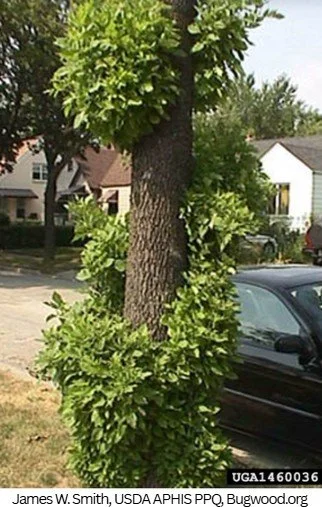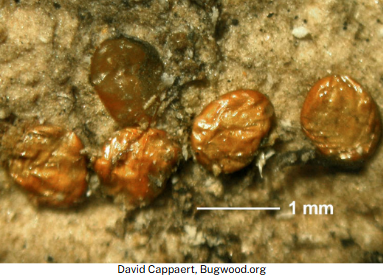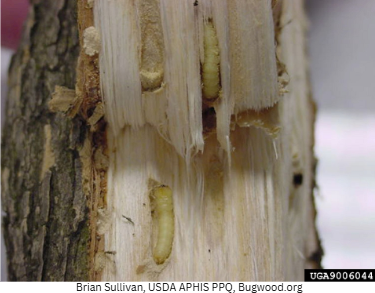
Monitoring
“As more invasive species are introduced over time and existing invasive species spread in sometimes unpredictable ways, the eyes of the curious public become an ever-more valuable asset in our collective biosecurity toolkit…it is fueled by passionate, engaged people who direct their curiosity to observing the natural world.
You never know what you might find—and how important that might be to protecting the trees, forests, and the whole natural world around you!”
Click HERE to download a form to carry with you while monitoring.
Click HERE to download a poster to share in your community.
Symptoms and Signs of Emerald Ash Borer
Symptoms of possible pest presence and activity in trees are general stress responses we can see. Symptoms may not always indicate the presence of EAB though are useful ‘hints’ to look more closely. Some symptoms to look for in ash trees include:
Overall thinning of tree canopy. EAB activity mostly takes place in the higher parts of the ash tree canopy. Research supports noted changes of leaf colour from deep green to lighter coloured leaves and smaller leaf size. See gradual canopy thinning images below (source: Smitley et al., 2008).
Chlorosis/Yellowing of leaves.
Branch dieback/Dead or dying branches.
Cracks in branches or tree trunk.
Epicormic shoots/new, thin twigs growing at base of tree and/or midway up tree trunk.
Woodpecker activity. This looks like white/blonde patches of bark that been flecked off. Only nearby woodpecker habitat supports this symptom.
The damage to ash trees we can see is a result of increasing larvae populations feeding on the inside of the tree bark. This activity reduces the tree’s natural ability to circulate life-sustaining water and nutrients needed to thrive and survive.
Signs of possible pest presence and activity in trees are used to narrow down and confirm the specific cause. Some signs we can see on the outer bark of ash trees though most require a closer look by specially trained technicians. A sign unique to EAB includes:
D-shaped insect exit holes in tree bark. They are roughly 1/8” in size. Note, there are other wood-boring insects that can cause exit holes in ash trees. Only the D-shape is specific to and characteristic of the Emerald Ash Borer beetle.
Other signs can be more difficult to see and may require special tools and training. They include:
Adult insects on leaves and/or outer tree bark.
Egg masses found in the cracks and crevices of the tree bark. They are roughly 1 mm in size.
Municipal technicians will look for additional signs of EAB after collecting branch samples for further analysis in their labs. These include S-shaped, serpentine feeding galleries/tunnels, and larvae presence in inner bark tissues.
Monitoring can be as simple as walking your neighbourhood, identifying an ash tree, and looking for symptoms and signs of EAB on a regular basis. The best time to start is late May and continue into October.
There is a helpful online tool created by municipal urban forest departments that can identify where city-owned ash trees are found in and near your neighbourhood. The links below will take you to these inventories developed by the City of Edmonton and the City of Calgary respectively.
In Edmonton, this is the LINK and a few easy steps to follow:
1. Choose ‘Genus’ from the right side dropdown menu and click on ‘Fraxinus’. Then ‘Apply’.
2. Zoom in on the map to find your neighbourhood and street area you wish to monitor.
3. Zoom in closer to find the ‘Tree ID number’. This will be helpful for the city to correctly pinpoint the tree you are reporting for further inspection.
In Calgary, this is the LINK and a few easy steps to follow:
Zoom in to find your neighbourhood.
Ash trees, Fraxinus species are a lime green colour.
Community monitoring and collection of information for early detection of EAB is considered an essential contribution to effective municipal response and management plans. Consider carrying a small notepad, pencil, camera, binoculars, and/or cellphone.
What to do if you find an Emerald Ash Borer beetle:
Call. If you reside in Edmonton, Calgary or Lethbridge call 311. Other centers please call 1-877-837-ELMS to immediately report your finding.
Capture. Place in a clean plastic bottle to avoid crushing. This makes it easier to identify. Be sure to record the exact location of the tree where it was found.
Contain. Place the container in the freezer. This will preserve the insect for closer inspection.
Important Note:
Do not peel or remove tree bark to look for EAB larvae or galleries on municipally-owned ash trees. This will cause significant harm to the tree, invite infection, and ultimately result in tree death. City officials have authority to perform further field investigations for confirmation of EAB on public trees.

